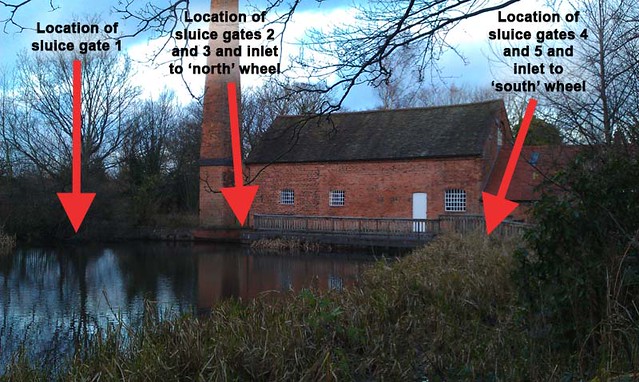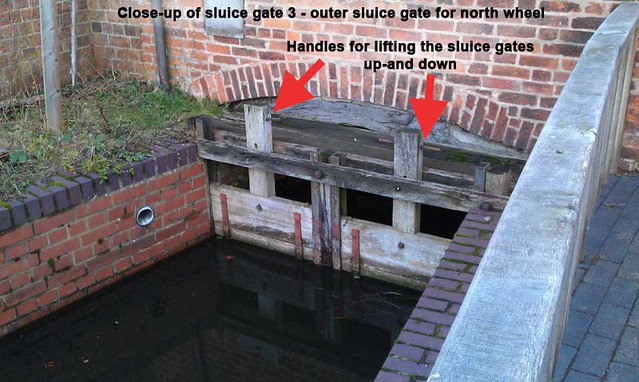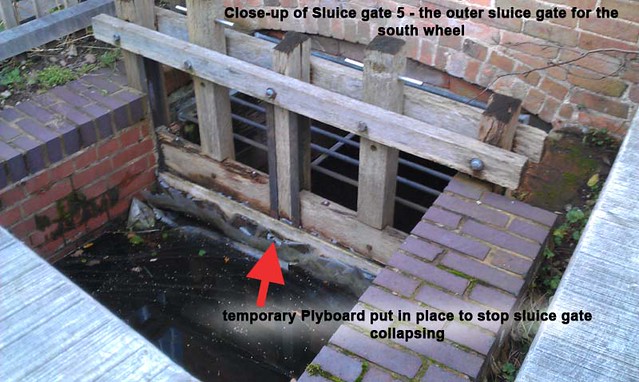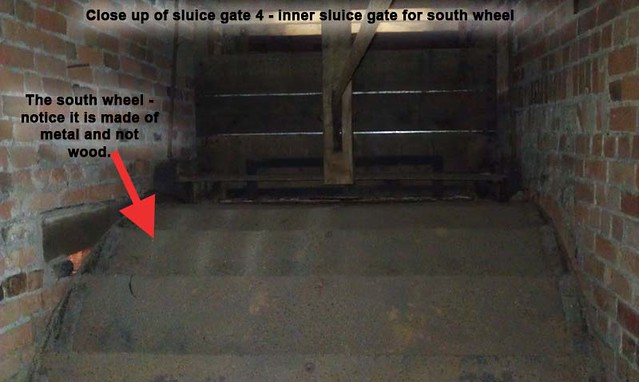Sarehole Mill, Moseley, to get three new sluice gates
Please before you delete this message due to its boring sounding topic, give me the chance to persuade you why three new sluice gates for Sarehole Mill in the coming weeks is actually very interesting.

The millpond behind Sarehole Mill, that keeps one of the two wheels spinning, is nearly completely silted up. Unless something is done to desilt the millpond in the next two years, we will have to permanently stop the one operating wheel. The installation of these three new sluices in the coming weeks, needs to seen as phase 1 of the de-silting of this pond. When we eventually get this pond de-silted, not only will we get more wildlife into the pond, but it opens up the opportunity to get the second wheel operating as a hydroelectric generator.
The millpond to the rear of Sarehole Mill was once a 1metre deep pond stretching 50metres from the Mill to Wake Green Road. The source of the water for this millpond comes from a spring hidden underneath the junction of Billesley Lane and Greenhill Road. Sadly, two thirds of the millpond is completely silted with trees going on it, whilst the small bit left is only 6 inches deep. The few ducks you see there do not paddle across the pond, they instead walk along the pond bed. No fish live in the pond, since they are simply poached during the Summer. Before we can even start the desilting process we need to replace three sluice gates that are either broken or on the point of complete collapse.....which in turn would completely empty the millpond and flood the mill out.
Sarehole Mill is one of the last two watermills within the boundary of Birmingham – the other one is New Hall Mill in Walmley, Sutton Coldfield. Up until the 1850s, there were approximately 90 watermills in operation in the modern boundary of Birmingham. Many of the millponds that powered these watermills still exist in our parks as boating ponds, for example Swanshurst Park, Cannon Hill Park, Trittiford Mill.
Sarehole Mill has two water wheels – the northern most one, called logically the ‘north wheel’, is still in operation and can be seen slowly spinning whenever the mill is open to the public. The other one, the ‘south wheel’ is hidden from public view and has not operated since before 1969. The south wheel could easily become operational, but during the 1969 restoration it was decided to focus all resources on making the north wheel operational.
Sarehole Mill has five sluice gates. The sluice gates are nothing more than thick planks of oak wood that can be lefted up-and-down, under which water flows, which in turns controls the water flow into the water wheels. One water wheel is used to move water out of the millpond, by passing the two wheels, in the event of a heavy rain storm and the mill being flooded. The sluice gates are moved up-and-down either by the use of a lever, or by a simple handle.
The five sluice gates are located as follows:
Sluice gate 1 - Millpond overflow, by passing both wheels – this is permanently stuck shut
Sluice gate 2 – North wheel – inner sluice gate – this is permanently stuck half open
Sluice gate 3 – North wheel – outer sluice gate – this is still operational and can moved up-and-down
Sluice gate 4 – North wheel – inner sluice gate – this is permanently shut
Sluice gate 5 – North wheel – outer sluice gate – this is completely rotten, permanently shut and in danger of collapsing

The proposal is to replace sluice gates 1, 3 and 5
Replacing sluice gate 1 will allow the mill to lower the millpond level in the event of heavy rainstorms. The mill has been flooded several times in recent years, due to the present gate stuck shut and not repairable.
Replacing sluice gate 3 will allow us to close water off to sluice gate 2 and given us the chance to do regular maintenance on it. Plus we will be able to regularly remove silt from the millrace in between sluice gates 2 and 3.


Replacing sluice gate 5 will prevent an complete collapse of the gate and subsequent drainage of the millpond. It will also allow us to start to moving towards getting the south wheel operational. Our long term aspiration is to connect this wheel to a motor and generate hydroelectric power for nearby houses.
Once we have these sluice gates fixed, it will allow us to desilt the millpond. We had been warned by a millwright that desilting the pond first without changing the sluice gates would result in sluice gate 5 collapsing under the higher water pressure from the millpond.


Once the millpond is desilted, we can get the north wheel spinning faster. At the moment, it is kept to spinning as slow as possible, so as to prevent sucking any silt from the pond onto the waterwheel. We do have a problem with silt gradually building up underneath the waterwill and in the tailrace leading from the north wheel. Having the opportunity to do fast bursts of water will allow us to flush all this silt out.
The cost of desilting the pond is approximately £200,000. We already have £50,000 towards this from the Birmingham Museums and Art Gallery Development Trust.
The three sluice gates will be replaced by the end of March.

2 Comments:
This looks fabulous, I first visited Sarehole Mill last year and immediately realised what a treasure we have here. It was sadly very quiet though. I also visited Soho House and found it incredibly interesting, again, the staff admitted there were very few visitors considering the immense importance to the city's industrial past. I wonder if it is because these gems are a bit too hidden away? Maybe an information point in the city centre would be useful, for visitors to Brum which offers a mini-bus tour to a few of these small museums, tieing them together. I wouild imagine it would have to be sponsored to begin with but I would hope that a fee chargaed would eventually make it pay for itself and bring these buildings back into the fold so to speak. I bet there are plenty of Brummies who have never coinsidered visiting such places, but if they did, like me, would be most impressed. I've visited Sarehole twice since my first discovery. Regardless, this is a great little story and good to see the Mill still being looked after.
It's been 3 years since this issue was posted. What's the update on this? I'm trying to do some research on Pond and Lake Maintenance, and I heard that Pond Dyes are a must-have tool for this kind of job. I'm trying to gather data on how many owners have used this in the past. Let me know if you can share some information about it. Have a nice day!
Post a Comment
<< Home